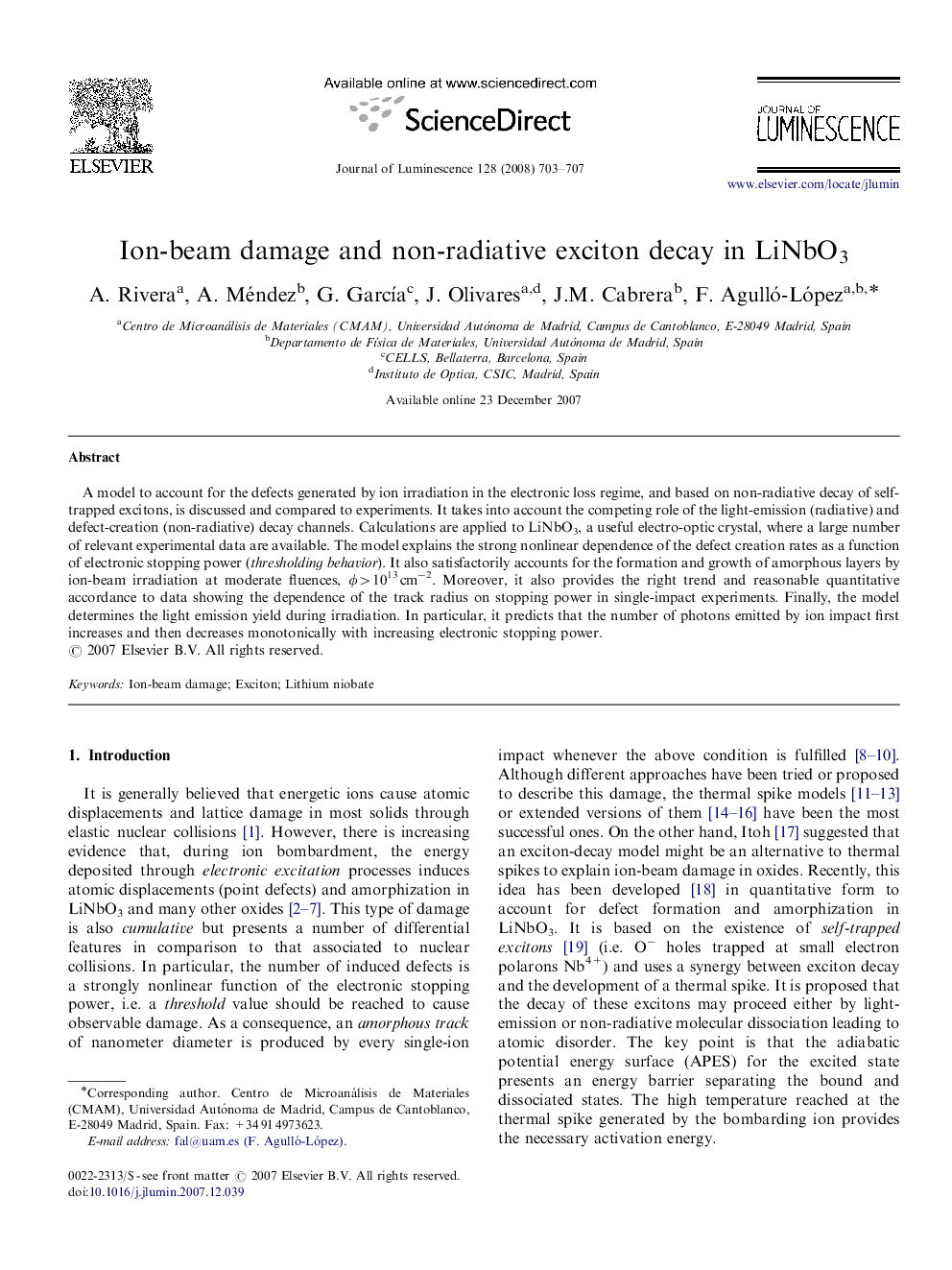| Article ID | Journal | Published Year | Pages | File Type |
|---|---|---|---|---|
| 5403497 | Journal of Luminescence | 2008 | 5 Pages |
Abstract
A model to account for the defects generated by ion irradiation in the electronic loss regime, and based on non-radiative decay of self-trapped excitons, is discussed and compared to experiments. It takes into account the competing role of the light-emission (radiative) and defect-creation (non-radiative) decay channels. Calculations are applied to LiNbO3, a useful electro-optic crystal, where a large number of relevant experimental data are available. The model explains the strong nonlinear dependence of the defect creation rates as a function of electronic stopping power (thresholding behavior). It also satisfactorily accounts for the formation and growth of amorphous layers by ion-beam irradiation at moderate fluences, Ï>1013Â cmâ2. Moreover, it also provides the right trend and reasonable quantitative accordance to data showing the dependence of the track radius on stopping power in single-impact experiments. Finally, the model determines the light emission yield during irradiation. In particular, it predicts that the number of photons emitted by ion impact first increases and then decreases monotonically with increasing electronic stopping power.
Keywords
Related Topics
Physical Sciences and Engineering
Chemistry
Physical and Theoretical Chemistry
Authors
A. Rivera, A. Méndez, G. GarcÃa, J. Olivares, J.M. Cabrera, F. Agulló-López,
